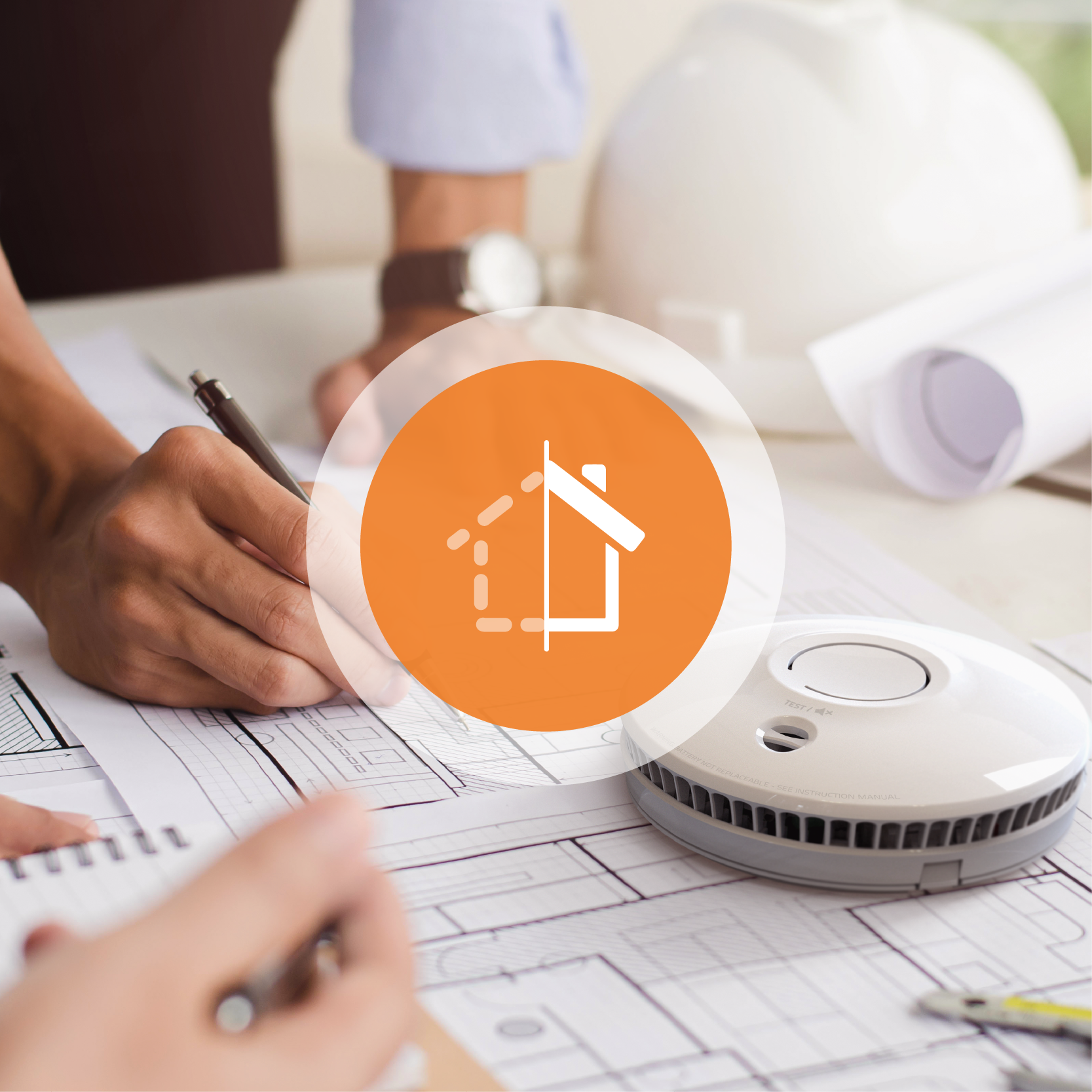Are you a
Homeowner?Are you a
Homeowner?
Building Regulations are the minimum standards set for the design, construction and alterations to buildings. They are regularly changed and updated by Government, and are approved by Parliament. Fundamentally, the Building Regulations work to ensure the health and safety of those using the building, and help conserve on fuel and power. They cover all aspects of construction, including foundations, damp-proofing, the overall stability of the building, insulation, ventilation, heating, fire protection and means of escape in case of fire. They also ensure that adequate facilities for people with disabilities are provided in certain types of building.
Fire safety is one of the key sections within the Building Regulations, which outlines the requirements needed to provide an early warning of fire, escape routes, preventing the spread of fire, and providing access to fire fighting facilities for the Fire and Rescue Services.
Fire Building Regulations in the UK point towards
BS 5839 as they key code of practice for the planning, design, installation, commissioning and maintenance of fire detection. (BS 5836-6 for domestic, and BS5839-1 for non domestic)
BS 5839-6:2013 categorises different grades and categories of fire detection systems for different types of building. Generally, the greater the fire risk and the more demanding the application required, the more comprehensive the fire safety system needs to be.
Here is a quick overview for specifying a fire detection and fire alarm system:
*Please refer to this when positioning fire alarms to meet Building Regulations
Building Regulations vary throughout the UK, and so specify different levels of fire safety when installing fire alarm systems. Please refer to:
All Building Regulations recommend:
As fire safety technology continues to advance, multi-sensor alarms (those monitoring for more than one indication of fire e.g. smoke and heat) are becoming increasingly available and affordable. These provide a quicker, more reliable, response to fire – so giving occupants more time to escape – and also reduce the risks of false alarms. Find out more in the blog What Is FireAngel Multi-Sensor Technology?
In England, the minimum guide for smoke alarm positioning to meet building regulations is as follows:
IMPORTANT to note:
In Scotland and Northern Ireland, the guide for smoke alarm positioning to meet building regulations is as follows:
In Scotland the Regulations also require:
IMPORTANT to Note:
In Scotland optical or multi-sensor alarms are recommended for the principle habitable room and all circulation areas. Heat alarms are recommended for the kitchen.
In Northern Ireland the Regulations recommend optical alarms for the principle habitable room and all circulation areas. Heat alarms are recommended for the kitchen. FireAngel’s Multi-Sensor smoke alarms combine the very latest in optical sensing with thermal enhancement for a faster response and would therefore be suitable for installation in the principle habitable room and all circulation areas.
If the risk to occupants from fire in any part of the premises is deemed to be high, a Category LD1 system would be appropriate.
For example, an LD1 system would be appropriate if the occupants live with a form any disability (mental or physical) that could delay their escape from fire. Other vulnerable individuals may also include the elderly or children – it is all relative to the length of time needed for a tenant to escape.
Installing alarms to meet LD1 in the Building Regulations would be as follows:
If you can't find what your looking for on our blogs and looking for further guidance and advice, our UK-based Customer Support team are on hand all week from 8:30am until 5:30pm, they can answer any further queries you may have on our products, solutions or services.